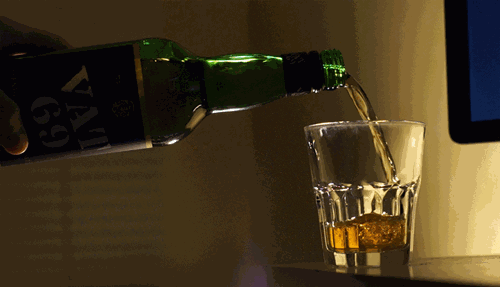8 Hard Drinking Facts from Whiskey Live Manila
Nov 8, 2016 • Mark Dantes

Nov 8, 2016 • Mark Dantes
Though it is no secret that whiskey’s golden color comes from the barrels it was aged in, it doesn’t always hold that the darker whiskeys are older than lighter colored ones. In fact, a whiskey’s color is more of an indication of the type of barrel used rather than how long it was aged. American bourbon, for example, is typically aged in charred oak barrels giving it a darker color in a much shorter amount of time compared to some older Scotch whiskeys. Speaking of barrel types…
Two major elements come into making a barrel to be used for whiskey – barrel size and type of wood. This discussion requires an entire master class on its own, but for purposes of small talk, barrel size generally tells you how much contact the liquid has with the wood over time, while type of wood generally determines taste and nose. Size can range from a 700-liter Gorda which is usually used for blended whiskeys, to a 50-liter Quarter Cask (or a quarter of the American Standard Barrel) used for quicker maturation since more contact gives more intense flavor in a shorter amount of time. Wood types are now generally limited to different types of oak – American Oak (honey, vanilla, ginger, nuts), European Oak (dried fruit, sherry, cinnamon, caramel), and Japanese Oak (floral blossoms, fresh fruit, nutmeg).
These places are among the main whiskey-producing regions of Scotland, each of which have their own style of producing whiskey, usually making use of what is available locally, resulting in a wide array of flavors when combined with elements such as barrel type and wood type! (Mind blown.) Though most of the process is probably kept secret and passed down through generations, generally, Speyside whiskeys are known for their fruity or spicy, sweet taste, Island whiskeys for the heavier, smokier, peaty variants, Highland whiskeys for the more floral, honey-flavored, lightly-peated malts, and lowlands for the light, grassy flavor notes.
Yes, when your Tito calls that bottle of Kavalan you brought, “Scotch,” you can totally call him out. Legally, only whisky made in Scotland, matured for at least three years and a day, may bear the name “Scotch” on their labels. There are other whiskey name-game laws, including American “straight” whiskey, or whiskey aged in brand new charred oak barrels. But these laws are really more of standards used for branding to guide whiskey (or whisky) producers. If you’re just at home drinking with family, sharing this piece of information, or any of the words of wisdom above for that matter, should not be done in a way that’ll make your Tito not want to share their P15,000 bottle of Christmas Cheer with you.
After all, they still pay for that stuff.
Whisky Live Manila 2016 was organized by Grand Cru Wines and Spirits and was held in Shangri-La BGC last October 28-29, 2016.
Pages: 1 2
Input your search keywords and press Enter.
